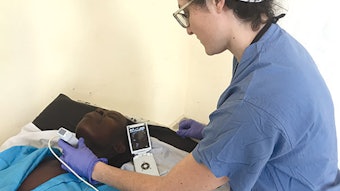Committee report: The prescription opioid crisis and otolaryngology
The U.S. is facing an opioid epidemic, the scale of which is difficult to overstate. Surgeons are important contributors to this public health crisis. Opioids form the backbone of postoperative pain control in the United States, however, concerns about the potential risks of abuse from short-term postoperative opioids are relatively new.
John D. Cramer, MD
Department of Otolaryngology – Head and Neck Surgery; Wayne State University School of Medicine. Detroit, MI
From the: AAO-HNSF Patient Safety and Quality Improvement Committee (PSQI)
The U.S. is facing an opioid epidemic, the scale of which is difficult to overstate. Surgeons are important contributors to this public health crisis. Opioids form the backbone of postoperative pain control in the United States, however, concerns about the potential risks of abuse from short-term postoperative opioids are relatively new.

Despite the frequency with which otolaryngologists prescribe opioids, the risks of developing opioid use disorder as a result of postoperative prescriptions is underappreciated.
New research suggests that six percent of opioid-naïve otolaryngology patients prescribed opioids postoperatively will continue to take them one year after surgery.1 After the initial opioid prescription, additional opioid scripts frequently come from other specialists and therefore may not be appreciated by the surgeon. After developing opioid dependency, many patients escalate to drugs of abuse over time. However, opioid prescribing practices vary widely, and otolaryngologists have previously received little formal education focused on pain.
After common procedures, some otolaryngologists reported prescribing no opioids while others reported prescribing over 60 opioid tablets.2 This calls on all otolaryngologists to judiciously assess their opioid-prescribing practices and review the latest data on strategies to minimize abuse.
To address this educational gap, the American Pain Society3 and American Society of Anesthesiologists4 created guidelines to help all surgeons manage acute postoperative pain. These guidelines are essential reading but require adaption to the unique constraints of the head and neck where strategies like epidural analgesia are not practically feasible. The approach described here is largely consistent with these guidelines and has been described in greater detail elsewhere.5
Comprehensive perioperative pain control
Pain control touches on all phases of surgical care. Optimal pain control starts preoperatively. During the preoperative discussion, it is vital to set expectations. Zero pain postoperatively is an unrealistic expectation. Using shared decision-making, patients can develop a pain management plan that addresses their history and values. Preoperatively, patients should be assessed for the risk of developing opioid abuse. Prior history of anxiety, depression, or tobacco or alcohol abuse are each associated with an increased risk of developing chronic opioid use disorder.
On the day of surgery, evidence suggests that multimodal non-opioid analgesia is one of the best strategies to control pain and minimize opioids after surgery.5 Multimodal analgesia approaches stress preventive analgesia in which pain medications are administered prior to a painful stimulus to prevent the development of hyperalgesia and minimize opioid requirements.
Traditionally, local anesthesia offered a limited duration of benefit. Newer approved agents, such as liposomal bupivacaine that lasts 96 hours, are changing this paradigm and can be employed after different procedures in the head and neck. While epidural analgesia is not feasible for head and neck surgery, regional nerve blocks using long-acting local anesthetics can be performed.
Postoperatively, multiple non-opioid agents can be used synergistically with other non-opioid agents. Acetaminophen should be combined with NSAIDs whenever feasible. In patients who are at risk for significant bleeding, celecoxib, a highly selective COX-2 inhibitor, provides enhanced pain control without any theoretical risk of bleeding. Importantly, COX-2 inhibitors, like all NSAIDs, need to be prescribed with caution in patients with cardiovascular disease. Adjunctive strategies, including gabapentin, provide another option when postoperative acetaminophen and NSAIDS are inadequate.
Safe opioid prescribing when necessary
When multimodal non-opioid analgesia provides inadequate pain control, then opioids may be required. Opioid prescribing requires careful selection of the type of opioid, strength, frequency, and number of pills. Patients who require opioid therapy postoperatively should be warned about the side effects, risks of abuse, and alternatives to therapy.
The patient should be aware that the expected duration of opioid therapy is short, and all opioids carry the potential for abuse. Tramadol offers an attractive opioid option for analgesia for many otolaryngologic surgeries. Tramadol targets both opioid receptors but also inhibits reuptake of serotonin and norepinephrine. Compared with other opioids, some data indicates that tramadol has a lower potential for misuse, abuse, and dependency.6
Codeine, on the other hand should be avoided. Codeine was previously commonly prescribed after adenotonsillectomy, but due to variable metabolism was issued a black box warning for use in children by the U.S. Food and Drug Administration.
When opioids are required after procedures with high levels of pain, institutional standards for opioid prescribing offer an opportunity to minimize excess opioids in the community. These standard prescribing recommendations enable data driven approaches based on published usage instead of anecdote.
Finally, prescription drug monitoring programs exist in 49 states and allow otolaryngologists another opportunity to screen for prior opioid use prior to prescribing and coordinate with other prescribers.
Safe disposal of opioids
When opioid medications are no longer needed, patients and physicians should be aware of safe disposal options. Consumers and caregivers should remove unneeded medicines to help reduce the chance of accidental ingestion or intentional misuse. The best option is to return medications to approved collection sites that can securely collect and dispose controlled substances.
Another option includes mixing medications with an unpalatable substance such as dirt, cat litter, or used coffee grounds then throwing them into the trash. Flushing opioids is a possibility if no other take-back options are readily available.
Opioid avoidance: proof of concept
While multimodal non-opioid analgesia strategies have been discussed for over 20 years, their adoption has lagged until now. There has been a surge in interest investigating multimodal non-opioid analgesia strategies in otolaryngology. One institution that implemented a multimodal non-opioid analgesia pathway was able to decrease the percentage of patients requiring a postoperative opioid after thyroid and parathyroid surgery to less than two percent.7 These strategies may also minimize complications and decrease length of stay by decreasing sedation and improving patient’s function after surgery.
Otolaryngologists need to acknowledge the potential harm caused by opioids. If an opioid- naïve patient develops opioid use disorder as a result of surgery, this is a surgical complication.
As surgeons, otolaryngologists have a duty critically evaluate opioid prescribing practices to minimize the potential for abuse from the medications that we prescribe.
References:
- Alam A, Gomes T, Zheng H, et al. Long-term analgesic use after low-risk surgery: a retrospective cohort study. Arch Intern Med 2012; 172:425-430
- Schwartz MA, Naples J, Falcone TE. Opioid Prescribing Patterns Among Otolaryngologists. American Academy of Otolaryngology – Head and Neck Surgery Annual Meeting. Chicago, IL, September 10-13 2017
- Chou R, Gordon DB, de Leon-Casasola OA, et al. Management of Postoperative Pain: A Clinical Practice Guideline From the American Pain Society, the American Society of Regional Anesthesia and Pain Medicine, and the American Society of Anesthesiologists’ Committee on Regional Anesthesia, Executive Committee, and Administrative Council. J Pain 2016; 17:131-157
- American Society of Anesthesiologists Task Force on Acute Pain M. Practice guidelines for acute pain management in the perioperative setting: an updated report by the American Society of Anesthesiologists Task Force on Acute Pain Management. Anesthesiology 2012; 116:248-273
- Cramer JD, Wisler B, Gouveia ACJ. Opioid Stewardship in Otolaryngology: State of the Art Review. Otolaryngol Head Neck Surg 2018:194599818757999
- Radbruch L, Glaeske G, Grond S, et al. Topical review on the abuse and misuse potential of tramadol and tilidine in Germany. Subst Abus 2013; 34:313-320
- Oltman J, Militsakh O, D’Agostino M, et al. Multimodal Analgesia in Outpatient Head and Neck Surgery: A Feasibility and Safety Study. JAMA Otolaryngol Head Neck Surg 2017; 143:1207-1













